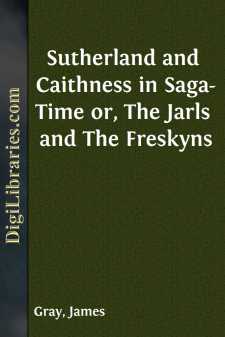Categories
- Antiques & Collectibles 13
- Architecture 36
- Art 48
- Bibles 22
- Biography & Autobiography 813
- Body, Mind & Spirit 142
- Business & Economics 28
- Children's Books 14
- Children's Fiction 11
- Computers 4
- Cooking 94
- Crafts & Hobbies 4
- Drama 346
- Education 46
- Family & Relationships 57
- Fiction 11828
- Games 19
- Gardening 17
- Health & Fitness 34
- History 1377
- House & Home 1
- Humor 147
- Juvenile Fiction 1873
- Juvenile Nonfiction 202
- Language Arts & Disciplines 88
- Law 16
- Literary Collections 686
- Literary Criticism 179
- Mathematics 13
- Medical 41
- Music 40
- Nature 179
- Non-Classifiable 1768
- Performing Arts 7
- Periodicals 1453
- Philosophy 64
- Photography 2
- Poetry 896
- Political Science 203
- Psychology 42
- Reference 154
- Religion 513
- Science 126
- Self-Help 84
- Social Science 81
- Sports & Recreation 34
- Study Aids 3
- Technology & Engineering 59
- Transportation 23
- Travel 463
- True Crime 29
Sutherland and Caithness in Saga-Time or, The Jarls and The Freskyns
by: James Gray
Description:
Excerpt
CHAPTER I.
Introductory.
In the following pages an attempt is made to fit together facts derived, on the one hand, from those portions of the Orkneyinga, St. Magnus and Hakonar Sagas which relate to the extreme north end of the mainland of Scotland, and, on the other hand, from such scanty English and Scottish records, bearing on its history, as have survived, so as to form a connected account, from the Scottish point of view, of the Norse occupation of most of the more fertile parts of Sutherland and Caithness from its beginning about 870 until its close, when these counties were freed from Norse influence, and Man and the Hebrides were incorporated in the kingdom of Scotland by treaty with Norway in 1266.
References to the authorities mentioned above and to later works bearing on the subject have been inserted in the hope that others, more leisured and more competent, may supplement them by further research, and convert those portions of the narrative which are at present largely conjectural from story into history.
What manner of men the prehistoric races which in early ages successively inhabited the northern end of the Scottish mainland may have been, we can now hardly imagine. Dr. Joseph Anderson's classical volumes on Scotland in Pagan Times tell us something, indeed all that can now be known, of some of them, and in the Royal Commission's Reports and Inventories of the Early Monuments of Sutherland and of Caithness respectively, Mr. Curle has classified their visible remains, and may, let us hope, with the aid of legislation, save those relics from the roadmaker or dykebuilder. Lastly, such superstitions, or survivals of beliefs, as remain in the north of Scotland from early days have been collected, arranged, and explained by the late Mr. George Henderson in an able book on that subject. Enquiries such as these, however, belong to the provinces of archæology and folk-psychology, and not to that of history, still less to that of contemporary history, which began in the north, as elsewhere, with oral tradition, handed down at first by men of recording memories, and then committed to writing, and afterwards to print; and both in Norway and Iceland on the one hand, and in the Highlands on the other such men were by no means rare, and were deservedly held in the highest honour.
Writing arrived in Sutherland and Caithness very late, and was not even then a common indigenous product. Clerks, or scholars who could read and write, were at first very few, and in the north of Scotland hardly any such were known before the twelfth century of our era, save perhaps in the Pictish and Columban settlements of hermits and missionaries. Of their writings, if they ever existed, little or nothing of historical value is extant at the present time. But the Orkneyinga, St. Magnus, and Hakon's Sagas, when they take up their story, present us with a graphic and human and consecutive account of much which would otherwise have remained unknown, and their story, though tinged here and there with romance through the writers' desire for dramatic effect, is, so far as the main facts go, singularly faithful and accurate, when it can be tested by contemporary chronicles....


